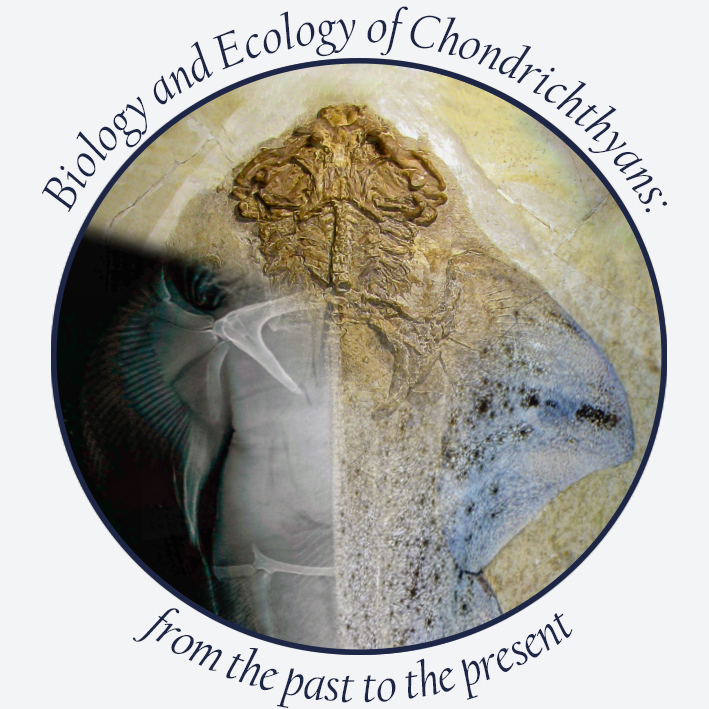Organisers: Patrick L. Jambura1,2, Julia Türtscher1,2, Eduardo Villalobos-Segura1 & Esther Manzanares Ubeda3,4
1University of Vienna, Faculty of Earth Sciences, Geography and Astronomy, Department of Palaeontology, Evolutionary Research Group, Josef-Holaubek-Platz 2, 1090 Vienna, Austria; eduardo.villalobos.segura@univie.ac.at; patrick.jambura@gmail.com; tuertscher.julia@gmail.com
2University of Vienna, Vienna Doctoral School of Ecology and Evolution (VDSEE), Djerassiplatz 1, 1030 Vienna, Austria;
3Department of Earth Sciences, Natural History Museum, Cromwell Road, SW7 5BD, London, United Kingdom; e.manzanares@ac.nhm.uk
4Departamento de Botànica i Geología, Universitat de Valencia, C/ Dr. Moliner, 50, 46100 Burjassot, Spain; esther.manzanares@uv.es

ABSTRACT:
Chondrichthyans, or cartilaginous fishes, are the sister group to all other living gnathostomes and are one of the most successful vertebrate groups in Earth’s history. Currently, the class Chondrichthyes comprises two major groups, the Elasmobranchii (sharks and rays) and the Holocephali (chimaeras). Together they encompass over 400 million years of independent evolution and have survived all five mass and several minor extinction events. Throughout its long evolutionary history, this group has inhabited a wide range of marine and freshwater environments and comprises many keystone taxa for ecosystem functioning and maintenance in modern marine ecosystems. Although most chondrichthyans are mesopredators, the few large and iconic apex predators like the white shark or megalodon have captured the imagination of humanity since ancient times. Unfortunately, this fascination, coupled with fear, misinformation, and the high economic value of chondrichthyan products, has led to a steep decline of chondrichthyan populations in the last decades and many species are threatened by extinction today.
This thematic session aims to create a space for presenting, sharing, and discussing recent advances in chondrichthyan research. This includes (but is not limited to) the early evolutionary history, such as events of the first appearance and dominance of holocephalans in the Devonian-Carboniferous (including the end-Devonian extinction event), the rise of modern groups of elasmobranchs in the Mesozoic (Jurassic-Cretaceous), extinction and recovery after the K/Pg boundary, and the evolution of chondrichthyans during the Cenozoic.
Discussion and the exchange of ideas are essential to understand the dynamics that have driven the evolution of this iconic group, especially times immediately before, during, and after extinction events are of special interest in the light of the current anthropogenically induced extinction event. We welcome any contributions that focus on chondrichthyans from all geological periods. Also work on recent taxa can be presented here, however, we strongly encourage topics with an evolutionary background.
CONTRIBUTIONS:
Coming soon!
